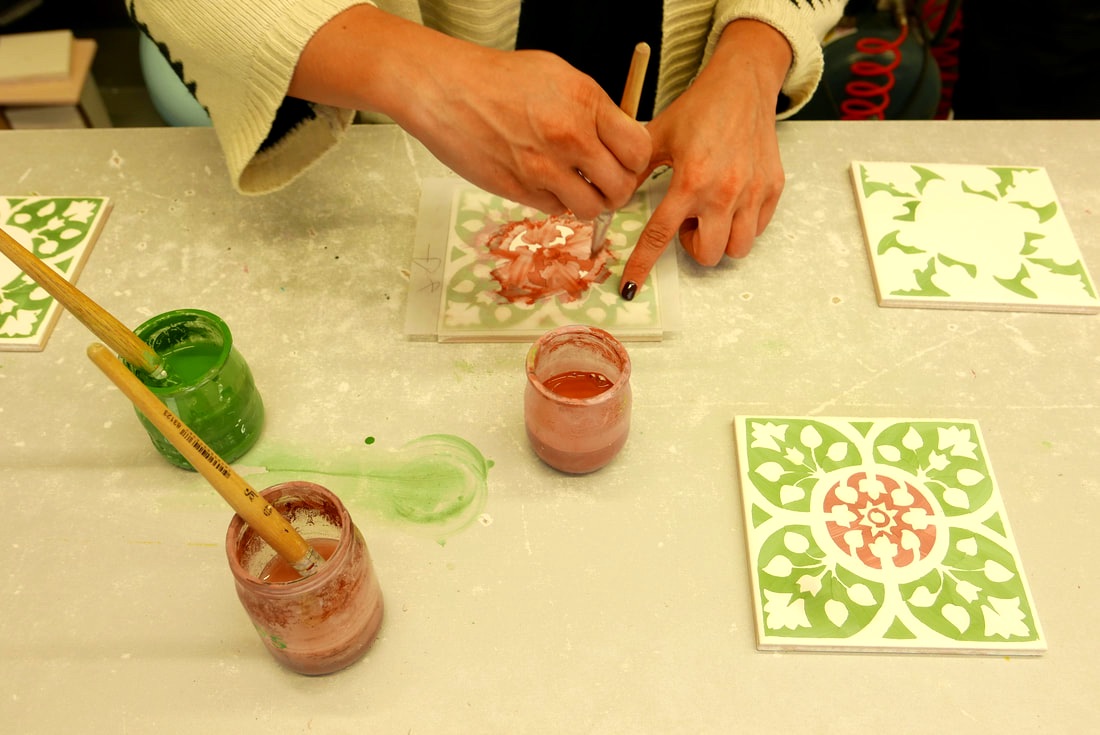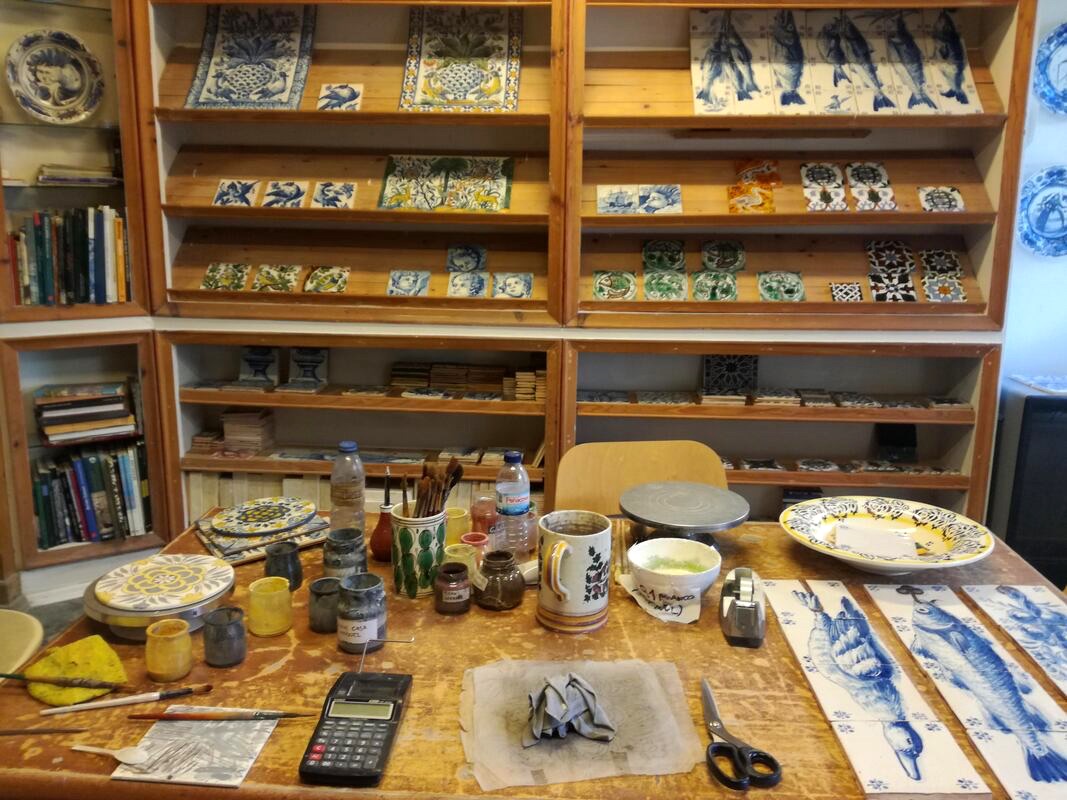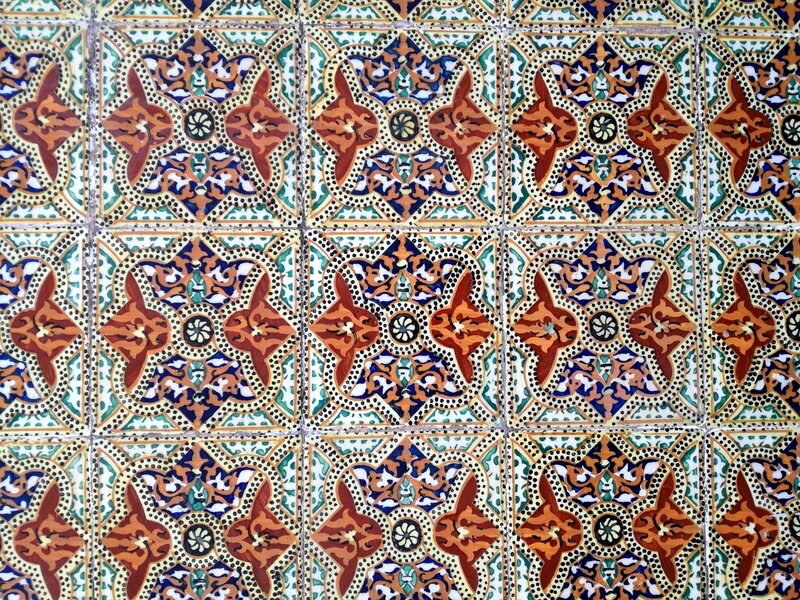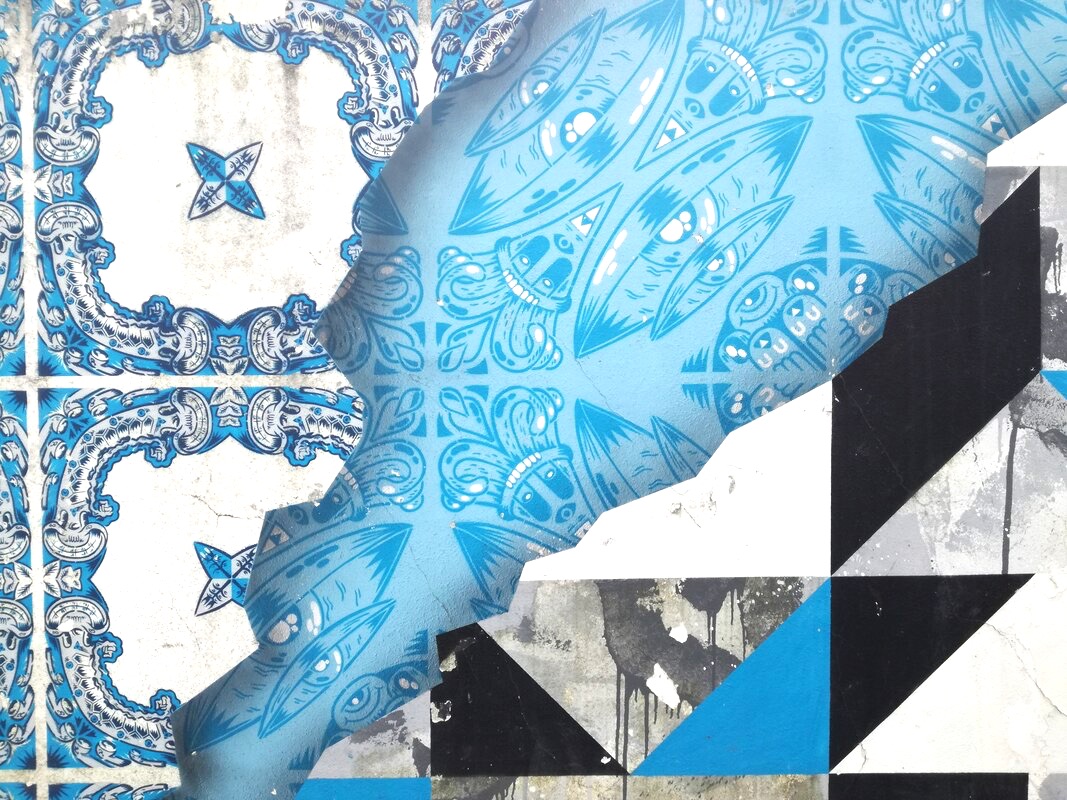|
They're Portuguese and they're part of our style. It's impossible to wander in any Portuguese town and not be gobsmacked with the amount of beautiful tiles. They're everywhere, from floor to ceiling, and they're part of our historical and cultural heritage for over 500 years. Azulejo from A to ZThe word azulejo has its origin in the moorish one azzelij, which means "small polished stone" and was used to refer to the mosaics used during the Byzantine period. In 1498 the Portuguese king D. Manuel visited Spain and returned delighted with the moorish art, particularly the shiny tiles. That was the eureka moment that triggered the use of azulejo with moorish inspiration in Portuguese palaces and churches. With the passage of time the first ceramic factories opened in Lisboa and the Portuguese culture and catholic religious motifs gained terrain. Still in the 16th century the use of azulejo de padrão (squared tiles used to create patterns) became a big trend in Portuguese architecture. Towards the end of the following century the burgeois claimed the right to use the azulejos to adorn their properties, which were only used by the clerics and the noble families until then. This natural progress continued and in the 20th century the Portuguese tiles were used in railway stations, bathrooms and kitchens. Nowadays we see it all: tiles in metro stations, fishermen houses, theatres, old palaces, contemporary buildings, with geometric patterns, hand painted fauna and flora, religious inspired motifs... each and every single one of them are witness of the historical evolution mentioned above and part of our heritage. To learn more about the history of the azulejo in Portugal it's worth visiting the Museu Nacional do Azulejo. Let's follow the patternLisboa and Porto are the biggest cities in the country and they both have fabulous examples of azulejo. In Lisboa it's impossible not to mention the Museum of Azulejo itself, but also Mosteiro de São Vicente de Fora, the old Factory Viúva de Lamego and the Factory of Sant'Anna. The latter is one of the oldest tile factories in Europe still working on a handcrafted way. When it comes to Porto, São Bento train station is possibly the most stunning example since the tiles cover the whole atrium, from floor to ceiling. There is also some beautiful tiled panels in churches, such as Igreja do Carmo and Capela das Almas de Santa Catarina, both located downtown. Because of the amount of palaces and private estates, Sintra is also a great place to admire Portuguese azulejo, particularly inside Palácio Nacional de Sintra. All of the above are great examples, but none come near Ovar. This small town is considered the Portuguese capital of azulejo. Walking around is mesmerising due to the colourful façades and interesting tiled patterns that can be found literally everywhere. There is such a big variety there's even a game at the Tourism Office related to the local azulejo. Breaking (tiled) barriersWe said it before, but we'll say it again: Portugal is old but gold. The tiles are antiques but they are still used and brought to life in fresh new ways, which is both disruptive as it is inspiring. Cycling tours on the hunt for the coolest tiles, walking tours for tile obsessed instagrammers, urban artists who draw inspiration from old tiled patterns, poets that project their creations on tiled façades, family boards games inspired in this colourful heritage... there are various ways in which the Portuguese azulejo is (quite literally) the piece of the puzzle. Subscribe to our newsletter to receive inspirational content and special offers on a monthly basis.
0 Comments
Leave a Reply. |
Categories
All
|
Telephone+351 938 503 009
|
|
Turismo de Portugal RNAVT nº 6915
|





